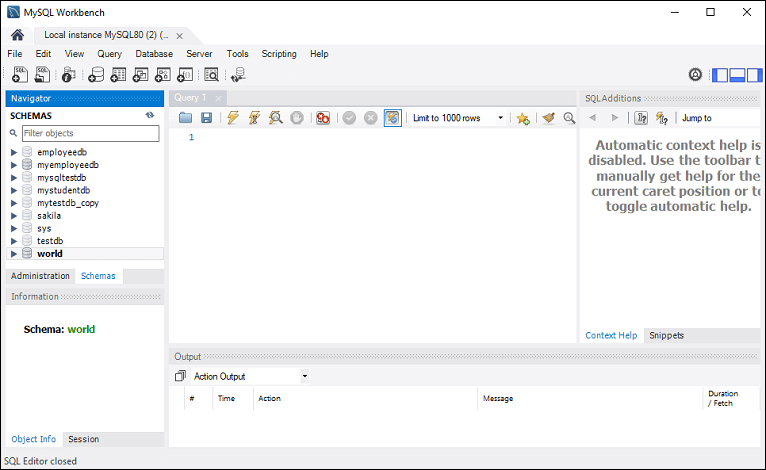

- #Mysql delete user force how to
- #Mysql delete user force update
- #Mysql delete user force upgrade
- #Mysql delete user force password

For more information for network configuration, seeĪz mysql flexible-server create Wait for the flexible server to satisfy certain conditions.Ĭreate a MySQL flexible server with custom or default configuration.
#Mysql delete user force upgrade
Upgrade the major version of a flexible server. Show the connection strings for a MySQL flexible-server database. Stop replication to a read replica and make it a read/write server.Īz mysql flexible-server server-logs downloadĪz mysql flexible-server server-logs listĪz mysql flexible-server show-connection-string List all read replicas for a given server.Īz mysql flexible-server replica stop-replication Get the parameter for a flexible server.".
#Mysql delete user force update
Update the parameter of a flexible server.Īz mysql flexible-server parameter set-batchīatch update parameters of a flexible server. List the parameter values for a flexible server. Lists available sku's in the given region.Ĭommands for managing server parameter values for flexible server. Manage import workflows for MySQL Flexible Servers.Ĭreate a new import workflow for flexible server. Get an user assigned managed identity from the server. Remove user asigned managed identites from the server. List all user assigned managed identities from the server. Geo-restore a flexible server from backup.Īdd user asigned managed identities to the server. List all firewall rules for a flexible server.Īz mysql flexible-server firewall-rule showĪz mysql flexible-server firewall-rule update Run an existing workflow in your github repository.Ĭreate GitHub Actions workflow file for MySQL server.Ĭreate an export backup for a given server with specified backup name.Īz mysql flexible-server firewall-rule createĬreate a new firewall rule for a flexible server.Īz mysql flexible-server firewall-rule deleteĪz mysql flexible-server firewall-rule list List the databases for a flexible server.Įnable and run GitHub Actions workflow for MySQL server. Manage MySQL databases on a flexible server.Ĭreate a MySQL database on a flexible server. Show the details of a specific backup for a given server. Wait for the Active Directory administrator to satisfy certain conditions.Ĭreate a backup for a given server with specified backup name. List all Active Directory administrators. Manage server Active Directory administrator.Ĭreate an Active Directory administrator.ĭelete an Active Directory administrator.
#Mysql delete user force how to
Uninstalling from Control Panel: I believe we all know how to uninstall programs from Control Panel.Manage Azure Database for MySQL Flexible Servers. Now MySQL should be removed completely along with all configurations and databases. To delete MySQL completely, check above locations and remove MySQL folders manually if they exist. The C:\ProgramData directory is hidden by default, thus installer will not remove this folder. In default installation, MySQL files are stored in below locations: C:\ProgramData\MySQL Any database information (including the tables and data), import or export files, log files, and binary logs produced during execution are kept in their configured location. Note: When MySQL is removed using this method, only the installed components are removed. Don't worry, installer will start where it stopped. This will take some time, installer may freeze in the middle, just kill the process and start again(takes a lot of patience). Select Remove.Īgain, you can remove one by one or all at once by selecting Product and then execute. Here you'll see Add, Modify, Upgrade, Remove, etc.


Look for MySQL Installer - Communityĭouble-click on MySQLInstaller (or MySQLInstallerLauncher) and the MySQL installer window will appear.
#Mysql delete user force password
To change the password for a root account with a different host name part, modify the instructions to use that host name. Replace the password with the password that you want to use. In my PC it was in below location: C:\Program Files (x86)\MySQL\MySQL Installer for Windows\Ī start menu shortcut may also be available on default installation. mysql> FLUSH PRIVILEGES Then change the 'root''localhost' account password. MySQL programs can be uninstalled one by one from Control Panel > Add or Remove Programs or using MySQL Installer application.įind MySQLInstaller.exe or MySQLInstallerLauncher.exe (both do the same job)īy default, installer reseides in the System folder where Windows is installed. For complete removal of MySQL installed from MSI package


 0 kommentar(er)
0 kommentar(er)
